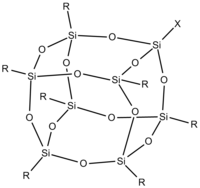
Photo from wikipedia
Herein, a new type of coordination polymer networks (CPNs), where both of 2,6-Pyridinedicarboxylic acid (DPA) and guanylate monophosphate (GMP) chelate with Eu3+, are firstly synthesized (GMP/Eu/DPA). After mixing with GMP/Tb… Click to show full abstract
Herein, a new type of coordination polymer networks (CPNs), where both of 2,6-Pyridinedicarboxylic acid (DPA) and guanylate monophosphate (GMP) chelate with Eu3+, are firstly synthesized (GMP/Eu/DPA). After mixing with GMP/Tb CPNs, a novel ratiometric dual lanthanide nanoprobe is constructed. Alkaline phosphohydrolase (ALP) specifically induces the cleavage of phosphate ester group in GMP. Therefore, the addition of ALP causes the fluorescence quenching of GMP/Tb, and then the emissions of GMP/Eu/DPA enhance as the result of the formation of Eu/DPA complexes. Glyphosate, as an organophosphorus pesticide, can vehemently inhibit the catalytic activity of ALP, so a ratiometric detection of glyphosate can be achieved with a linear range from 0.015 to 8.45 μg/mL. The present strategy also shows good recoveries for measuring glyphosate in rice, millet, soybean, milk, tap water, and mountain spring water, suggesting a great potential for applications in foods.
Journal Title: Food chemistry
Year Published: 2020
Link to full text (if available)
Share on Social Media: Sign Up to like & get
recommendations!